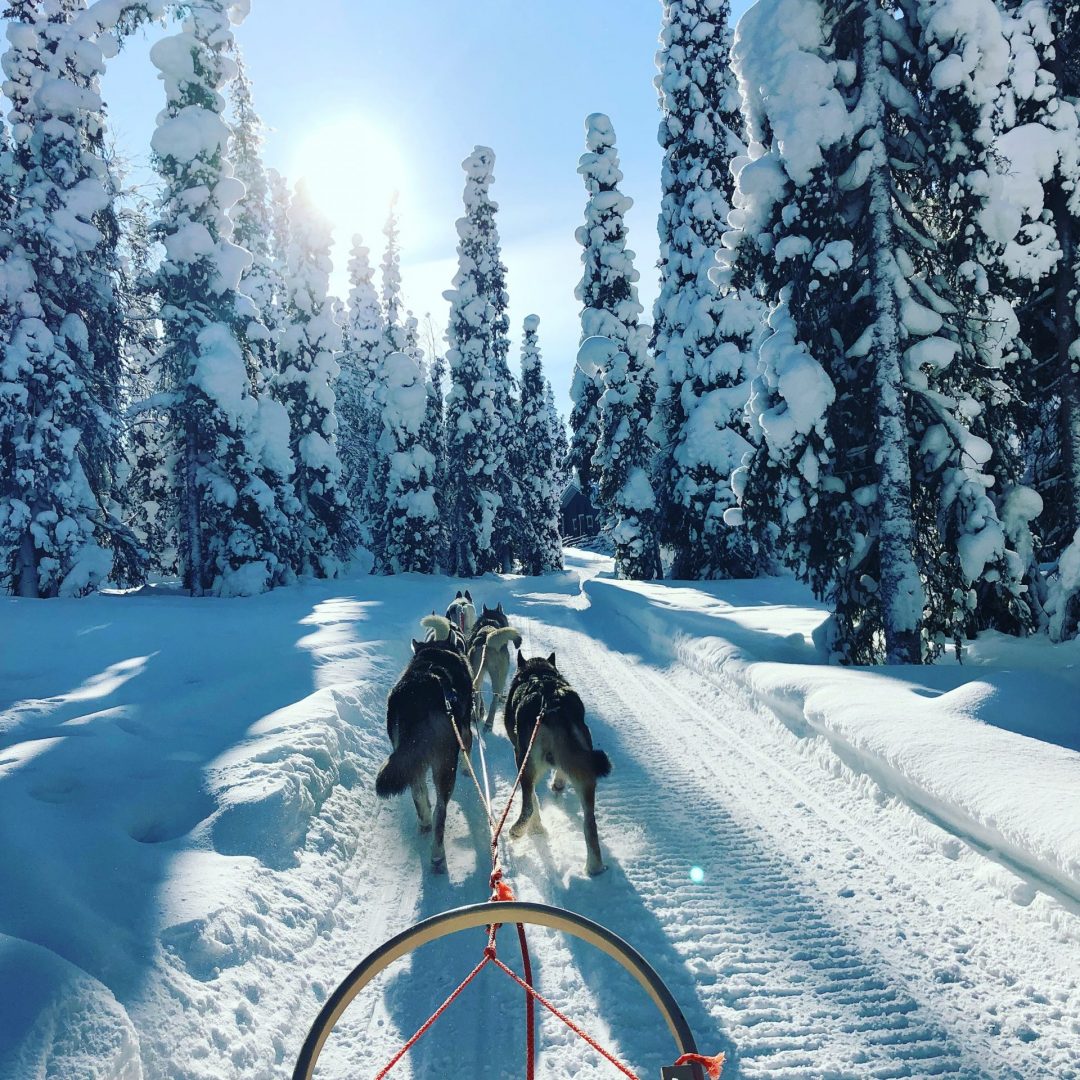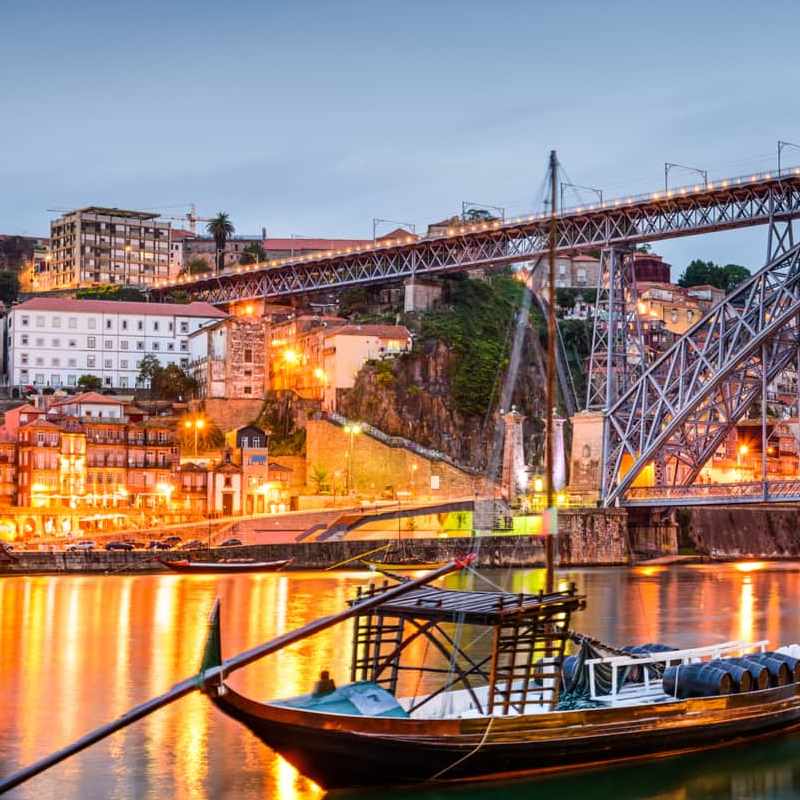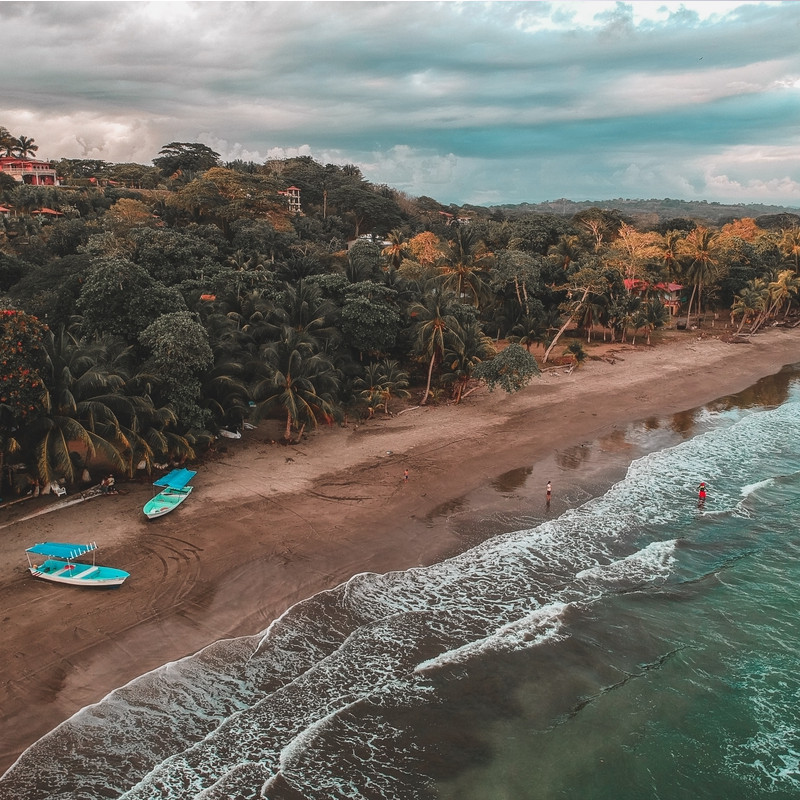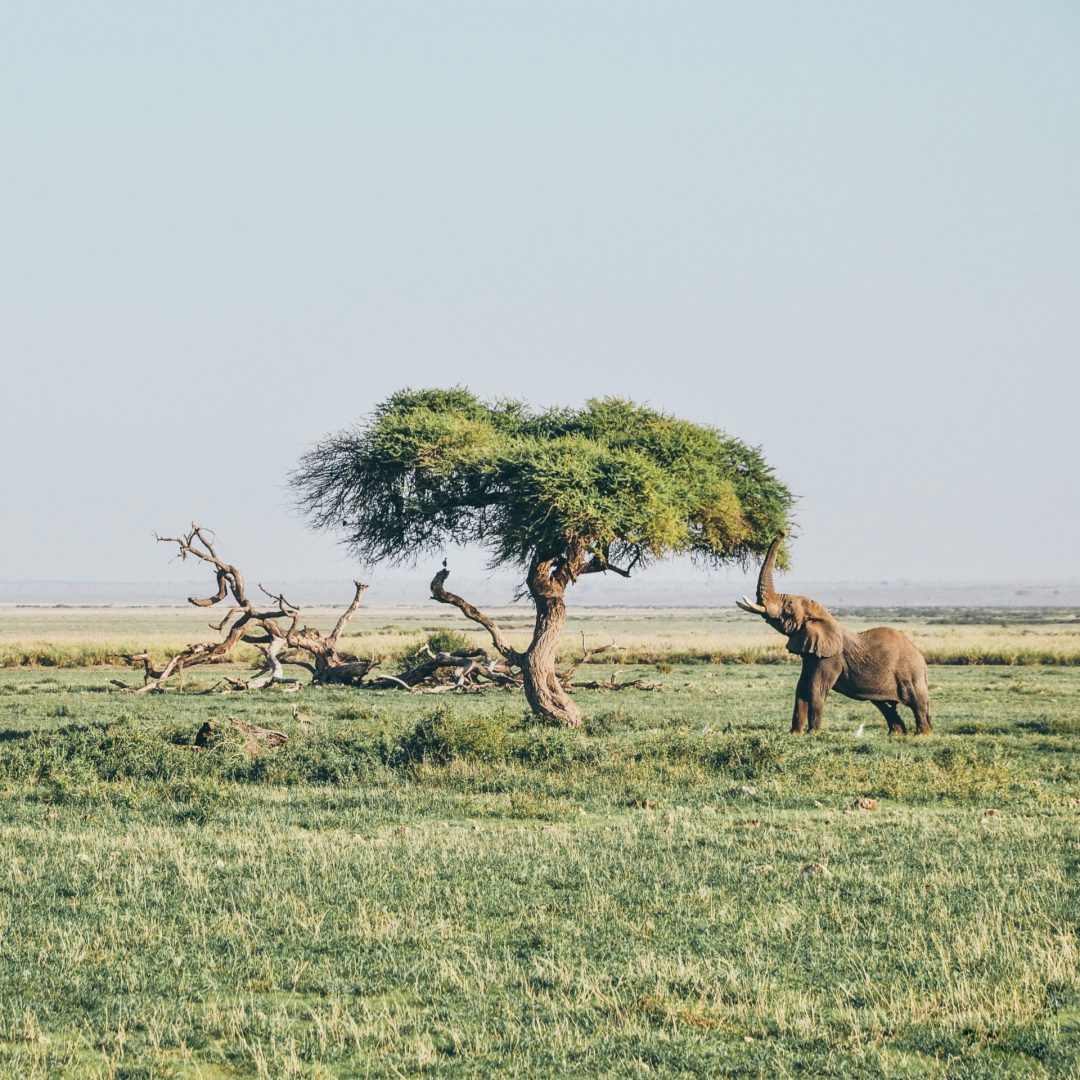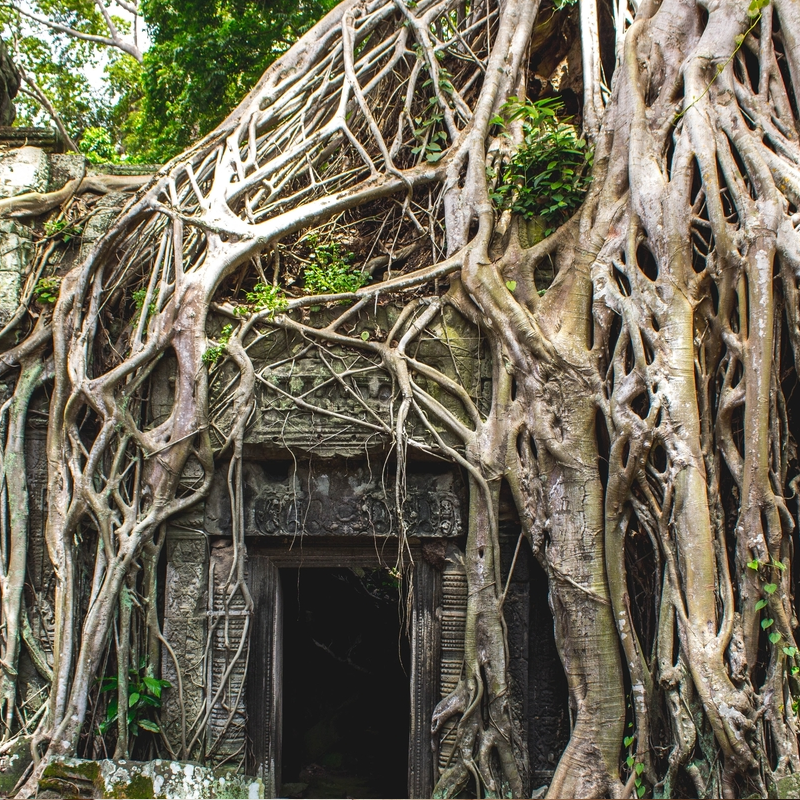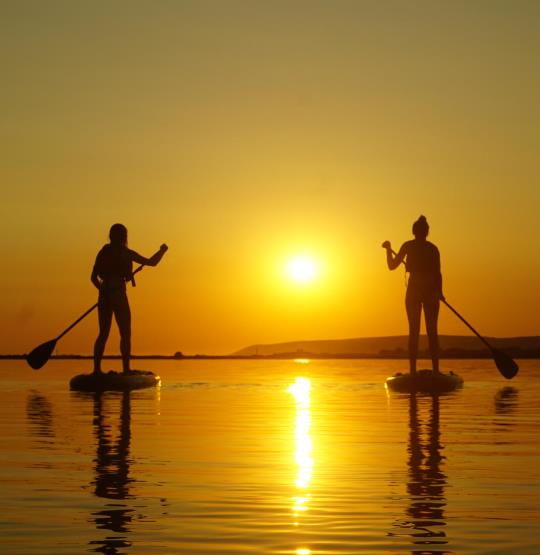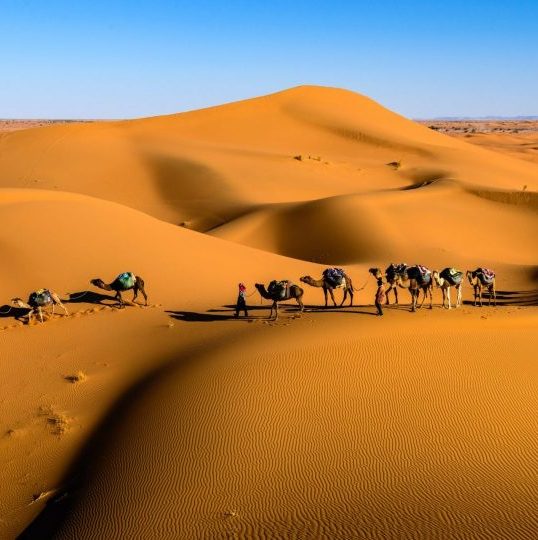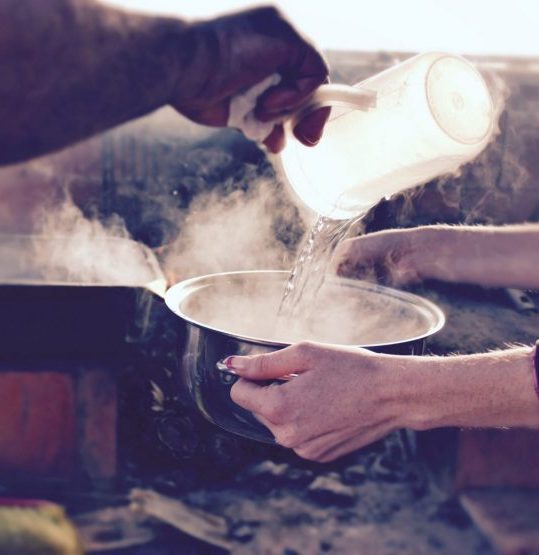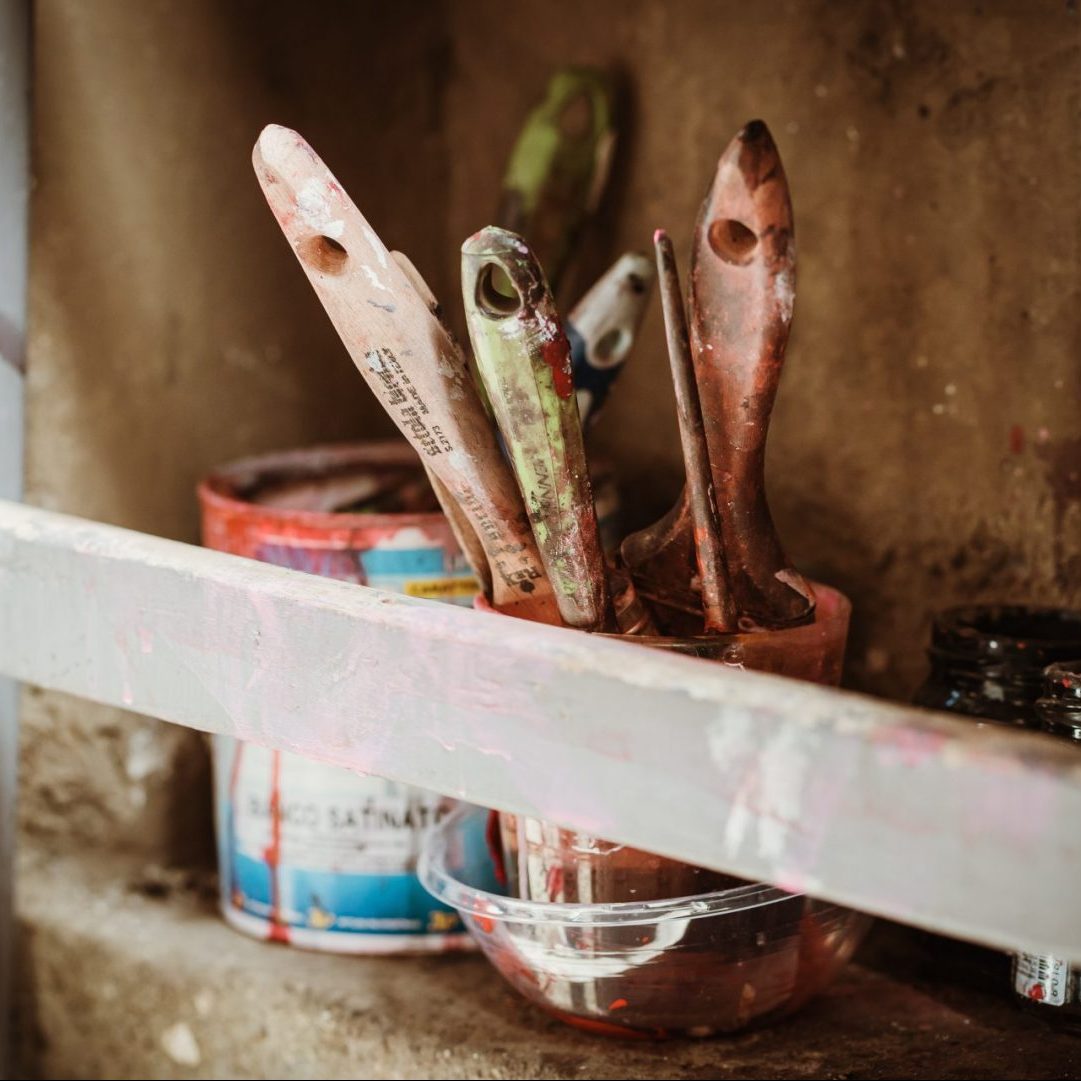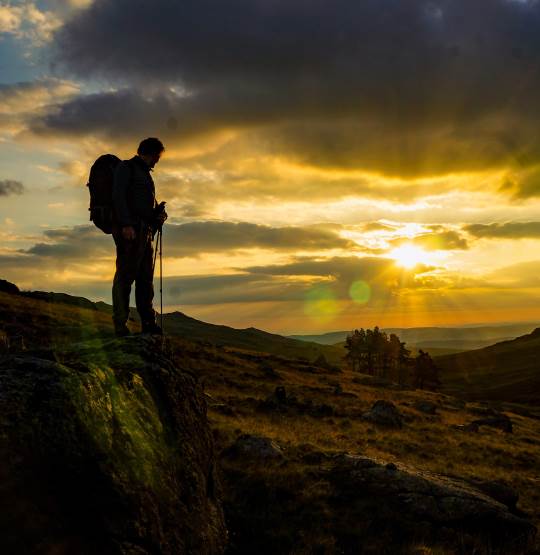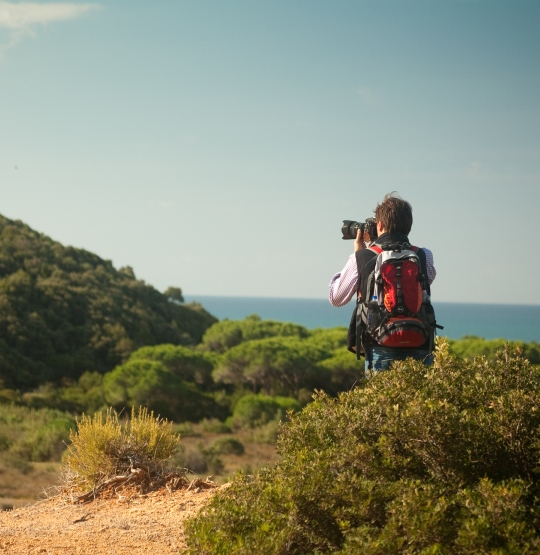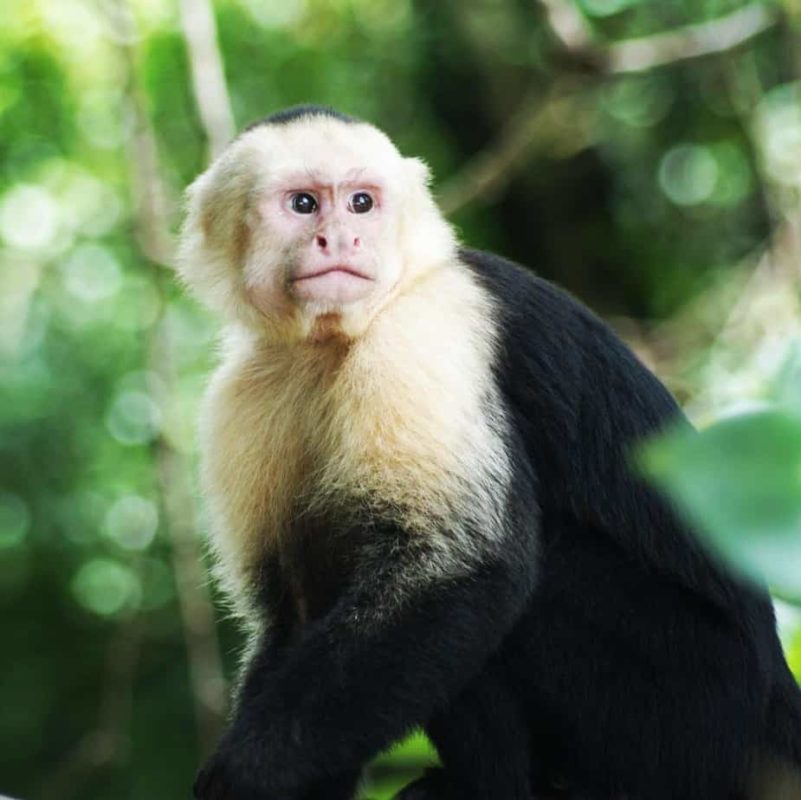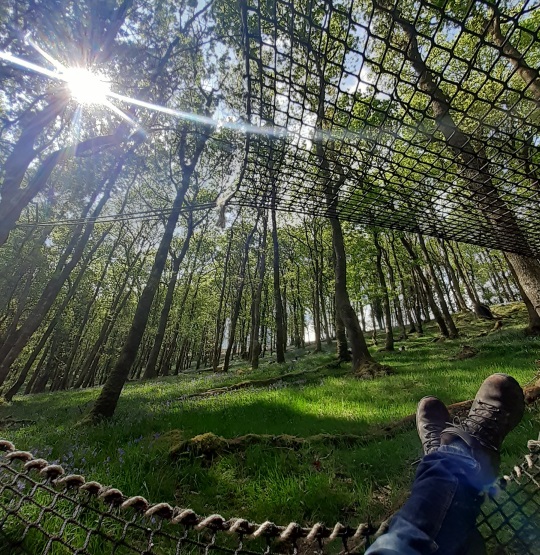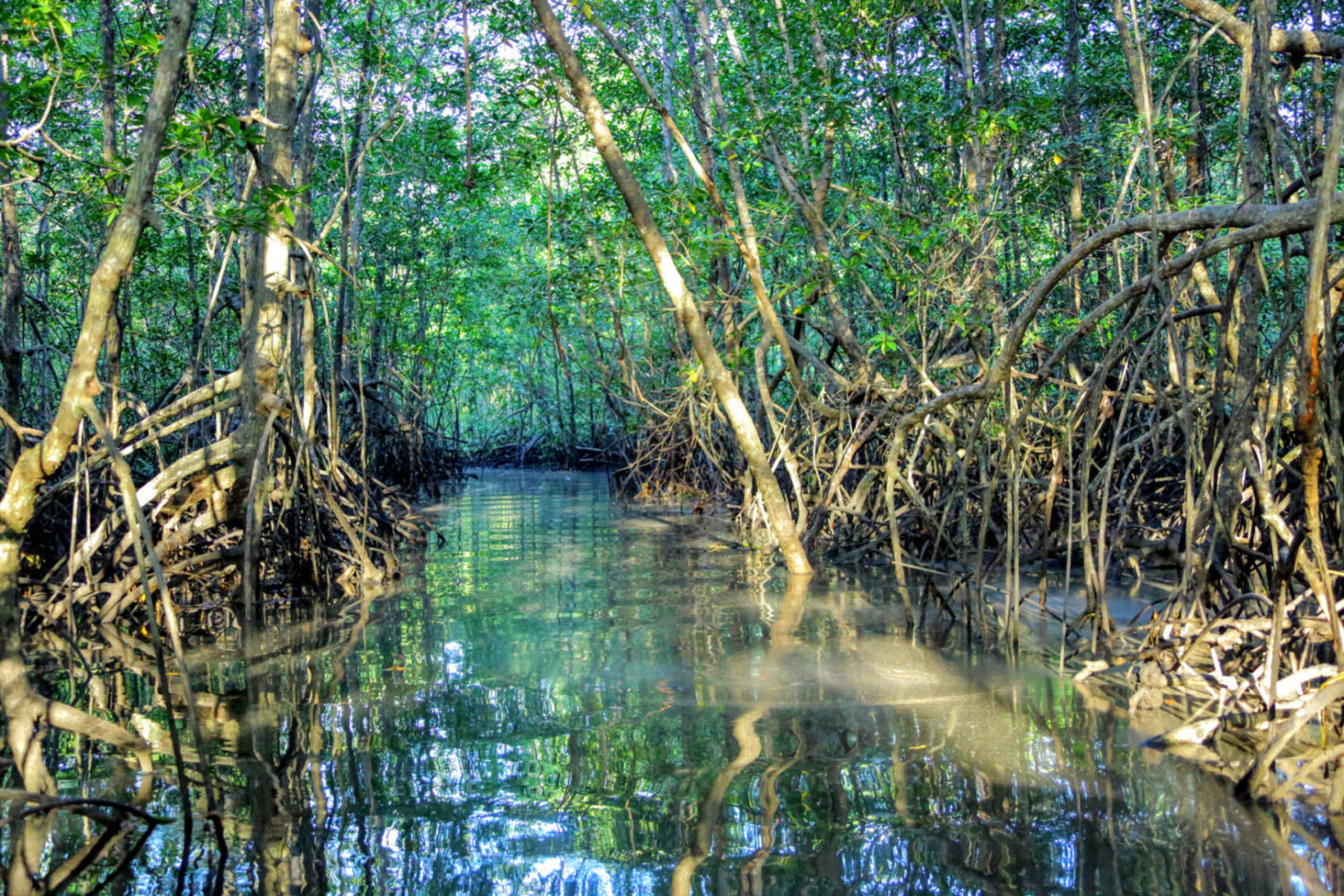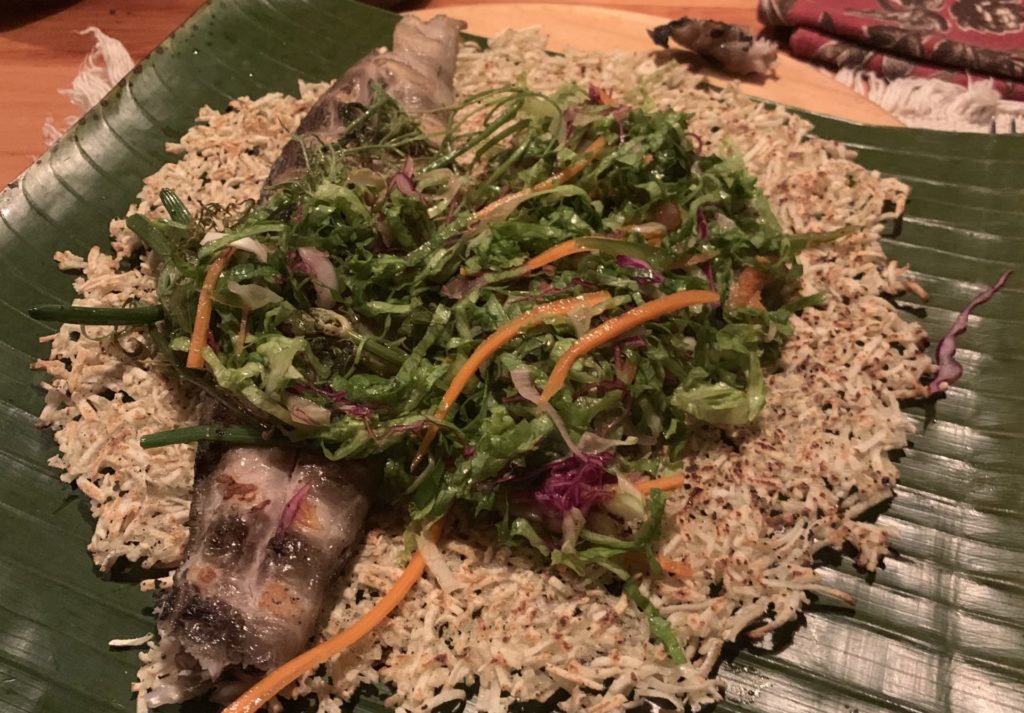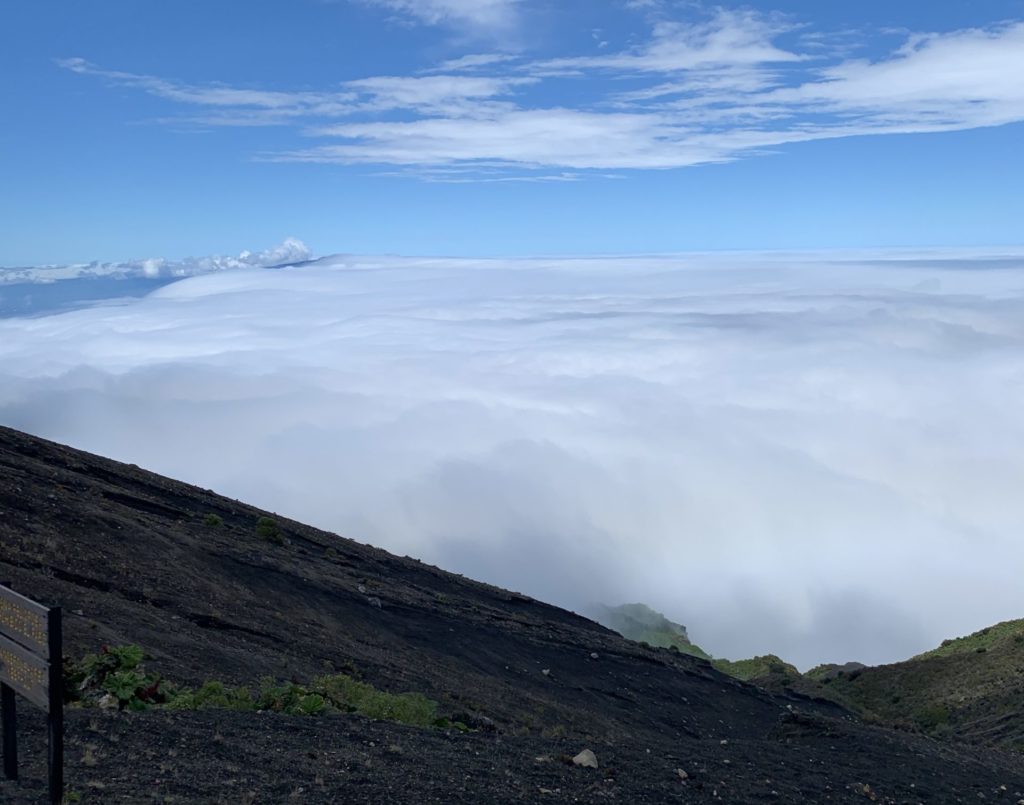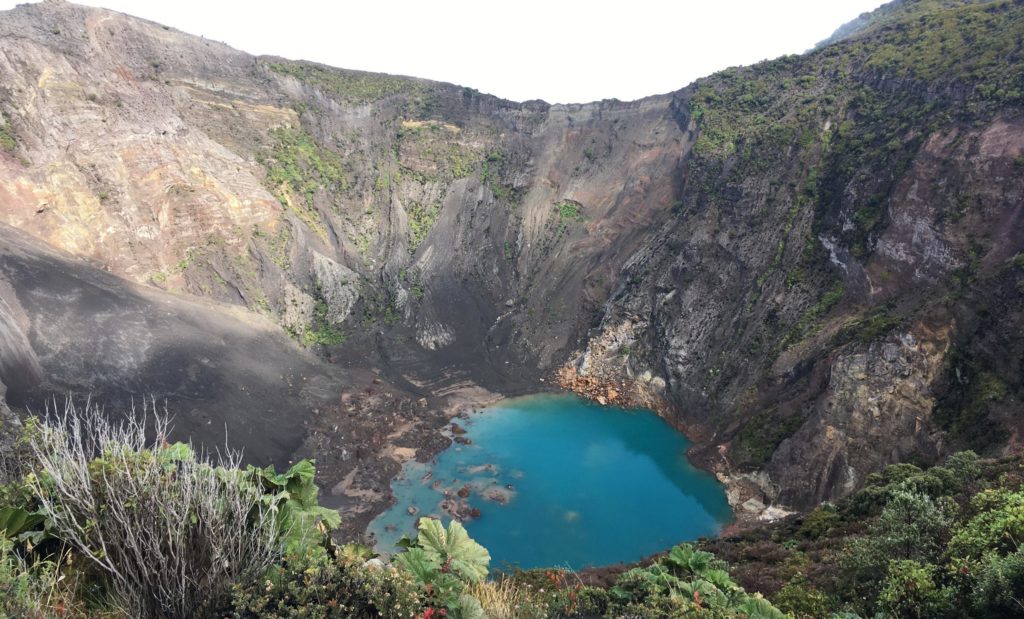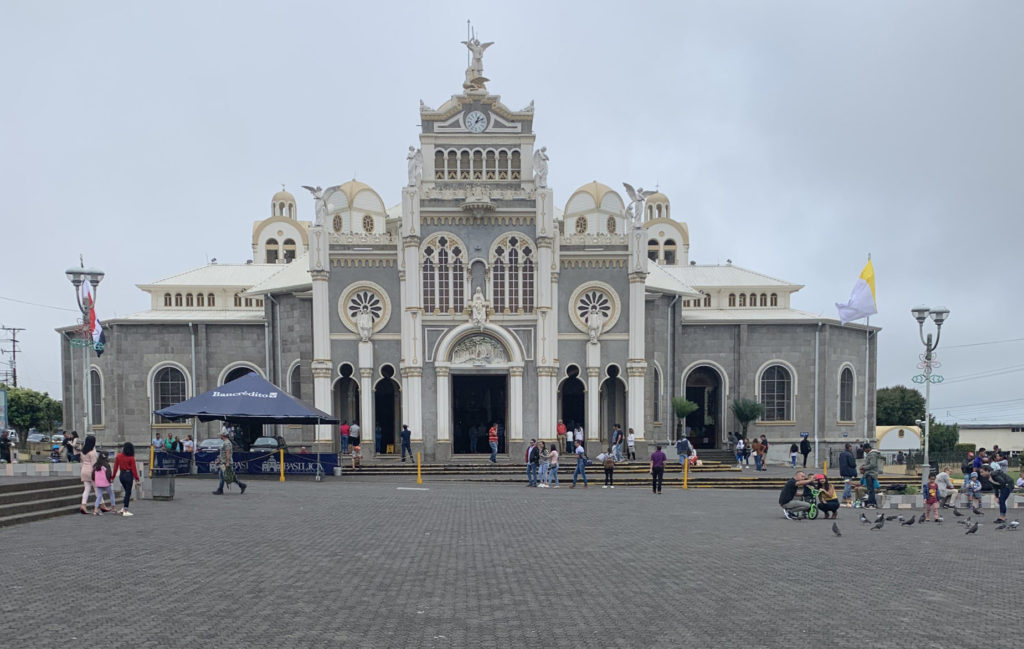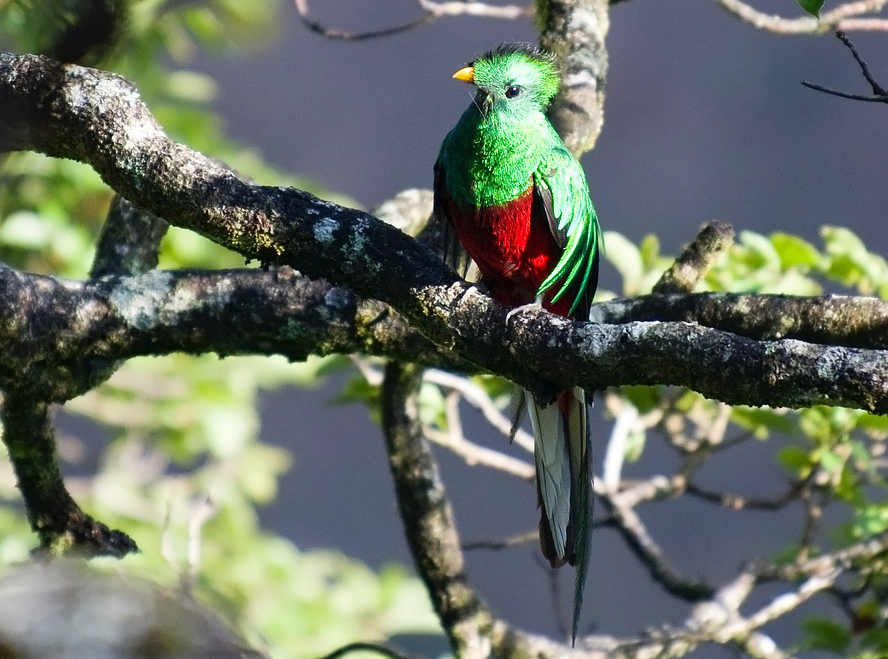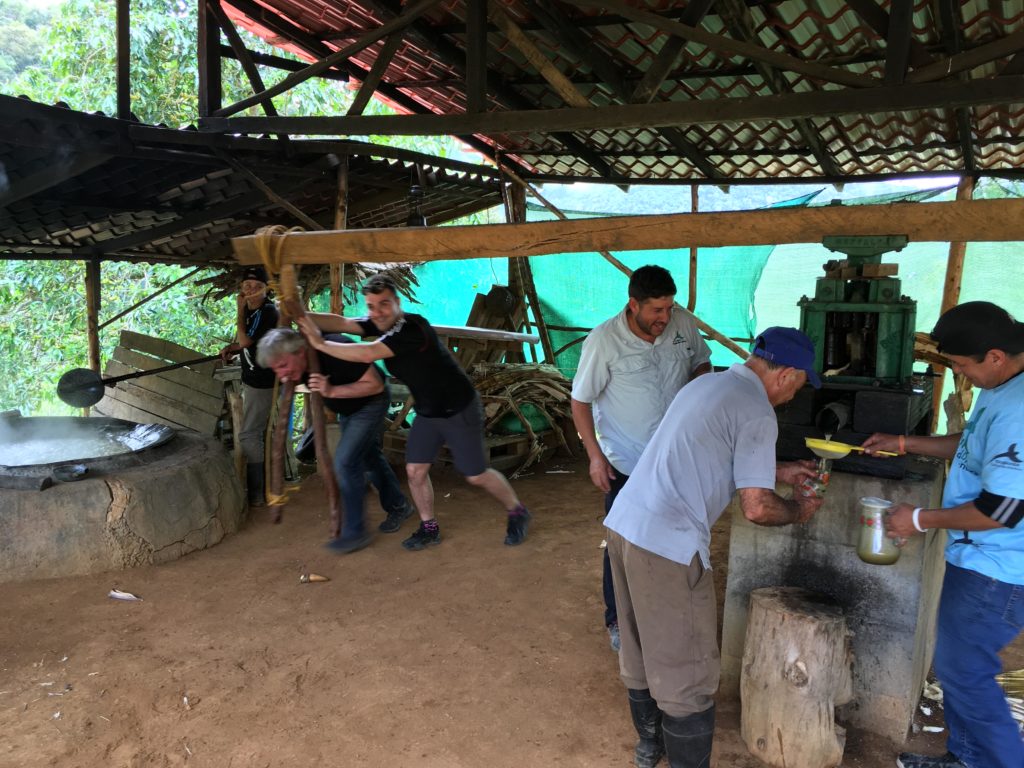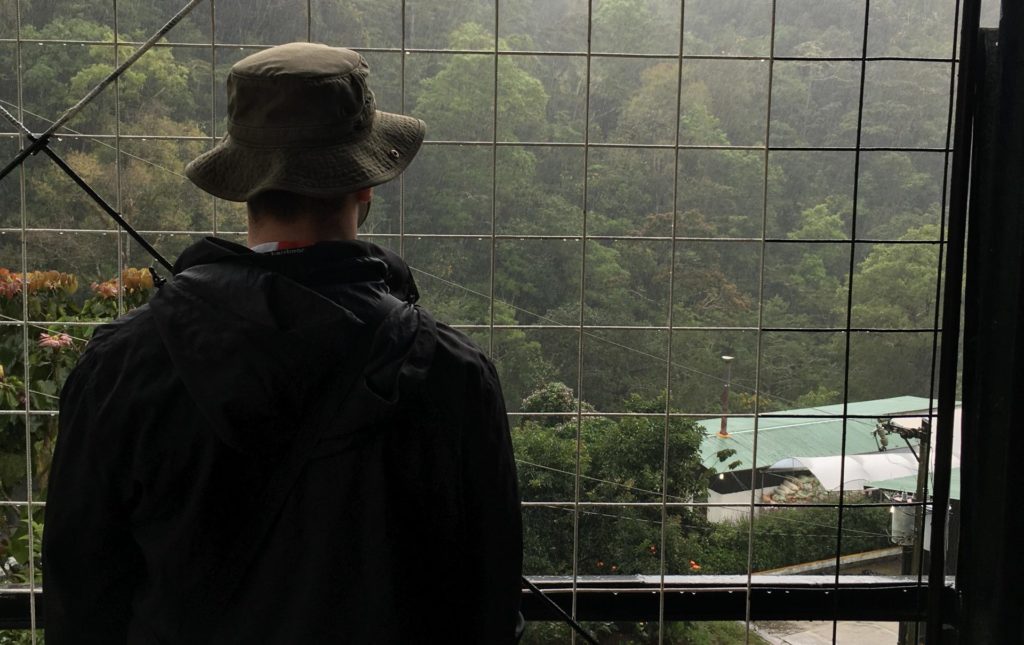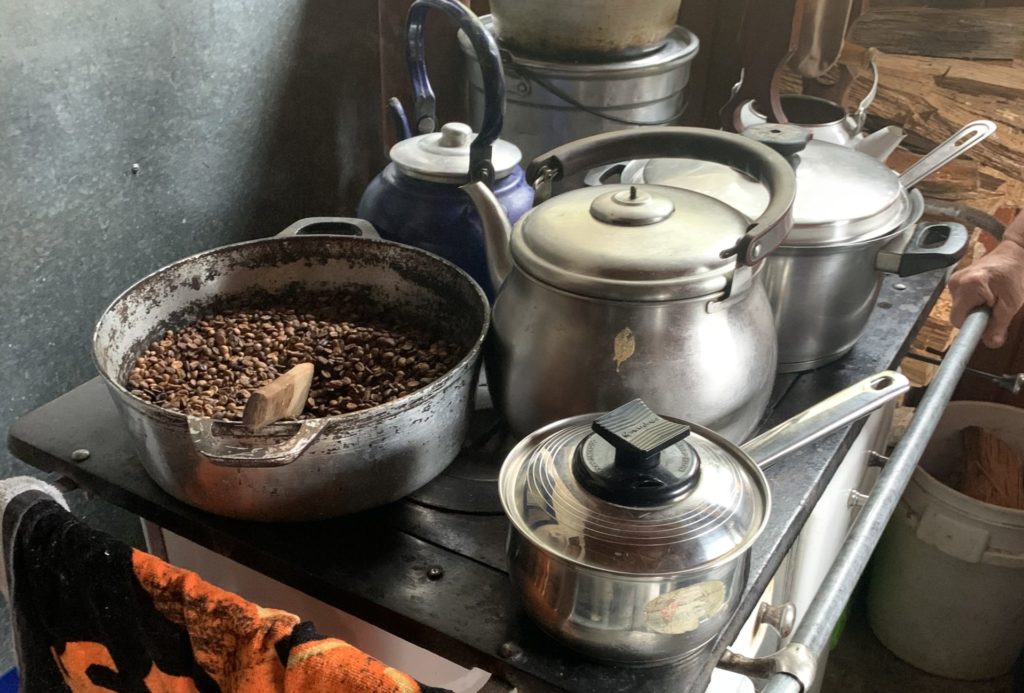“There’s the only army you’ll find in Costa Rica.” Our guide through the Corcovado National Park points, and a group of dazed and jet-lagged tourists peer at the ground. A highway of ants stretches from one side of the path to the other, with many carrying slices of green above their head. Leafcutter ants.
The Costa Rican military was abolished in 1949 following the end of the civil war, and the nation has blazed an unprecedented trail in many other areas since then. Covered coast to coast with undulating lush green forest, it’s been placed at the top of the New Economics Foundation’s Happy Planet Index (measuring human well-being and environmental impact) twice. It produces over 98% of its electricity from renewable resources and is on track to become the world’s first carbon-neutral country by 2021. From the highest peaks of the cloud-forest to coastal nature reserves, it’s amazing how much Costa Rica is united by a shared vision – protecting the natural environment, keeping it so clean and showing it off to anyone who cares to pop their head in.
Day 1 – Land in San Jose
Our trip to Costa Rica begins much like any other – we touch down and speed through the airport, out into the hustle and bustle of travelers searching for tour buses or haggling for a taxi – which seems unnecessary stress when already coping with 11 hours of flying and 6 hours of jet lag.
We, however, are greeted by a friendly face. John, who was our personal local guide for the next few days, spots us and bursts through the crowd to save us from the confusion, taking us away from the mayhem and into his air-conditioned minibus. It was a small detail, but I really can’t stress enough how great this felt. Having a helping hand from the moment you arrive makes those first holiday moments so much more pleasant, and allows you to focus on what really matters – taking it all in and enjoying yourself!
On the drive to our first hotel, John is a fountain of knowledge. He tells us all about the amazing adventures that we had lined up over the next few days, and fills us in on all the sights in San Jose as we whizzed past them. The national football stadium, the old army barracks (now the National Museum) and finally arriving at our first hotel, the Parque del Lago in San Jose proper. It’s 5 pm by the time we check in to our rooms, which gives us a couple of hours of down-time before grabbing some authentic Costa Rican dinner and getting a gratefully early night, ready for an equally early start tomorrow.
Day 2 – San Jose to Los Quetzals
John promises us that you can usually see the Volcano in the distance. That’s what we’re supposed to be visiting today, but a cold front pressing down from Mexico and the USA in the north has covered most of Costa Rica’s central valley in a thick and low hanging cloud. But the low-hanging cloud isn’t all bad news – at least not for where we’re going.
We start at 8 am – it’s Christmas so traffic is mercifully light – and then we begin the hour-and-a-half drive up to Irazú Volcano National Park. The second highest peak in Costa Rica, and the country’s highest volcano, we climb nearly 2,500 meters to get there. The drive is dim, grey, and rainy, and we begin to think that we might as well have stayed in England for all the difference it’s made. And then, about three-quarters of the way along the drive, we cleared the cloud line. Not all at once, but inching through these low clouds until the view was not all that dissimilar from the view out of the plane window on our flight. A crisp and bright blue sky above, cloud stretching for miles below, like soft cotton sheets punctuated at intervals by the peaks of Costa Rica’s Central Volcanic mountain range. It felt quiet up here.
The volcano has three main peaks, including one which is affectionately named after American President John F. Kennedy, whose 1963 visit to Costa Rica coincided with the most active period of the Volcano’s recent history. A small lagoon lies nestled in the main crater – a simple collection of rainwater turned a curious shade of fluorescent blue by the Sulphur regularly emitted by the volcano. But the real gem is the short walk up the radio towers. A viewpoint restaurant sits on the volcano’s highest peak – now abandoned, but perfectly accessible to tourists wanting to enjoy just a slightly better view. The short walk is very much worth it. They say on a clear day you can see both the Pacific and Atlantic oceans from up there. We haven’t even been in the country for 24 hours, and we’re already amazed by Costa Rica’s natural beauty.
And now, for a bit of culture. After a drive down the mountain and a short stop for a Costa Rican lunch, we continue on our route to Cartago, the old colonial capital of Costa Rica to see the Cathedral of our Lady of Angels – one of the most significant churches in the country. Built to the Byzantine style, its high ceilings and beautiful woodwork and masonry make it a welcome respite from what had turned quite quickly into a rather humid day. Interestingly, we discover this church was originally built in the 1600s, and was destroyed by two earthquakes in its original location before being moved to its current location in 1912. Locals tell of a young girl who found a small statue of the Virgin Mary in a nearby stream – an event which is honoured every year on the 2nd of August by pilgrimages of up to 2.5 million people from around the country. The remains of the old cathedral can still be seen just around the corner from the new one, now converted into public gardens and housing public art exhibitions!
Our first full day in Costa Rica comes to an end here – we get back in the car and drive to our accommodation for the night. Climbing slightly higher before beginning a descent into the cloud forest – most tours take you up to Monte Verde, but we were heading for the Los Quetzales national park instead. An altogether quieter reserve with all the beauty of Costa Rica’s cloud forests – just slightly off the beaten track. Turning off the pan-American highway, we descended down into the valley, vigilantly on the look-out for Tapirs hiding in the dense jungle.
No luck, but instead we reached Trogon Lodge, our accommodation for the night. A handful of 20 villas, hidden about half-way down the valley, and perched right on the edge of a small river – where they fish for fresh trout that is served every evening for dinner. Nature trails stretch across the property and, for the more adventurous, even out into the forest and up to a local waterfall. The rooms are cozy and perfectly equipped – it’s chilly up here, but don’t worry, they place a hot-water-bottle in your bed every evening during dinner.
Trogan Lodge Click to see short video!)
Day 3 – Quetzals and Los Abuelos
This part of Costa Rica is famous for its wildlife – and particularly the birdlife, and of course the eponymous Quetzal. Taking a trip to the cloud forest and not going on a Quetzal hunt is like going to Paris and avoiding the Eiffel Tower. The key difference, however, is that the Eiffel Tower stands sentinel day and night. If you want to spot a Quetzal, it is very much a case of ‘the early bird catches the worm’. Which is how we find ourselves, 5:30 in the morning, somewhat sleep-deprived, in the surprisingly chilly morning air walking up to our van beside John.
He enlightens us somewhat – Quetzals, he says, prefer the early morning just as the sun is rising. It seems strange that we should be going on the lookout for just one bird in a 5,000-hectare national park, but John has the know-how. He’s been to this area a few times before, and there’s a fruit tree just a short way back up the road that a group of Quetzals are particularly fond of. So, we park, climb out of the van. Around the bend are 5 or 10 other people waiting quietly, in reverence, zoom-lenses the size of bazookas, to catch a glimpse of this bird and its shocking plumage.
In such a dense forest, it’s hard to imagine being surprised by the colour green, but when a Quetzal darted across the road and right up into the tree about half-an-hour later, it seemed that everything else had had the contrast turned down since we’d woken up. It’s no surprise that many Mesoamerican civilizations considered this bird divine – its brilliant green and red colouring, and its long, trailing tail feathers are so alien from anything I’d ever seen before. And so captivating too – we easily passed an hour just staring at three of these birds, one male, one female, and one juvenile, before John reminded us that breakfast was starting soon. Wouldn’t want to miss that.
By the time we had eaten, the shadows filling the valley of the cloud forest had been completely vanished by a bright shining in the clear morning sky. We resumed our adventure, climbing back into the car and journeying just one valley over to the village of San Gerardo de Dota for a taste of what life is really like in the Cloud Forest.
John leaves us for the day, and we are greeted by Randal – the youngest in a family of locals who have farmed in this valley for generations. He had moved away, he tells us, much like many of the young people in rural communities such as this one in Costa Rica. With their fortunes based on farming coffee and sugar cane, there just wasn’t enough money to support him staying around. But over the last decade, the upsurge in eco-tourism across Costa Rica has encouraged him – and many others – to return home for a slightly different purpose.
Our first stop is the Los Abuelos sugar mill – and we get very lucky. About once every two weeks, the family here collect cane from the field and turn it into raw sugar. Not granulated as we might expect, but a sort of syrup that has a variety of purposes, from making sweets to the famous Agua Dulce, a hot drink typical to Costa Rica. Randal tells us about the process – they press the sugar cane in a mill to extract its juice, then they heat the juice over a three-hour period to make two different products. One, not too dissimilar from toffee, is a sticky brown sweet that can glue your teeth together (and incidentally tastes amazing). The other is a large, conical block of almost fudge. It’s the latter that’s used to make the Agua Dulce. We arrive just as the process is being finished, so we are lucky enough to sample both. Randal invites us to have a go on the sugar mill – two young men barely manage to get it going. Carlo, the grandfather, and the man undoubtedly in charge of this operation scoff at us. At 63 years of age, he pushes the mill effortlessly, as if he was born to do it. We all look understandably sheepish.
We share lunch with this family – nothing made in a restaurant, but enough food provided from the kitchen in their house. The food until now has been amazing, but we can’t help but feel that this is our first taste of true Costa Rican cuisine. Banana Ceviche, rice, and beans, with a few small tortillas. Simple, and yet amazingly fresh and filling.
The day continues to speed by – we take an after-lunch stroll down to one of three local waterfalls as the heavens open for a fifteen-minute downpour. We take shelter and continue our walk to see a river that has turned into a torrent with even this brief shower. Randal tells us that this river collects most of the water at the top of this valley – it’s only about a meter across, but the water level varies by almost 4 meters from season to season.
The walk is short, but we stretch it out to last about an hour, stopping here and there to admire almost everything. We come across a number of humming-birds and marvel at the insect life that is absolutely everywhere if you know where to look. Then finally, we return to the village for our last stop of the day – coffee.
The rain has started to pitter-patter down again, and when we arrive at the coffee plantation on the edge of the village, it is to a scene of frantic action. A fast exchange between Randal and the plantation owner in Spanish, and we ask what the matter is. He tells us they need to hurry now. It’s not the season for rain like this – if it rains when the coffee berries are ripe, they might fill up with water and fall from the plants. Which would mean they rot, and they are mostly useless.
Even as we talk, the rain begins to ease up again, and the pace seems to slow down almost imperceptibly. We offer to help, but we’re waved away – it’s hard work, they tell us. Our first reaction is indignance, but remembering the display of strength from Carlo on the sugar mill, we think it better not to argue. And so, we are taken through the traditional coffee-making process – how they grow the berries, how they separate the beans from the berries. How they cook the beans, shell them, and roast them. And how they ultimately produce some of the best coffee we’ve ever tasted. Sitting on the porch of their house, we sip slowly, and enjoy a small plate of home-made biscuits. Again, we take our time with this. Things seem slow here – at least when they can be.
As we finish our cups, the sun, it seems, wants to set. We say our goodbyes – and buy a couple of bags of coffee to take home with us. Something tells me it won’t quite taste the same when coming in out of the English rain, but the memory will be enough. And so, we climb back in the car and return to our lodge for our final night in the cloud forest.




